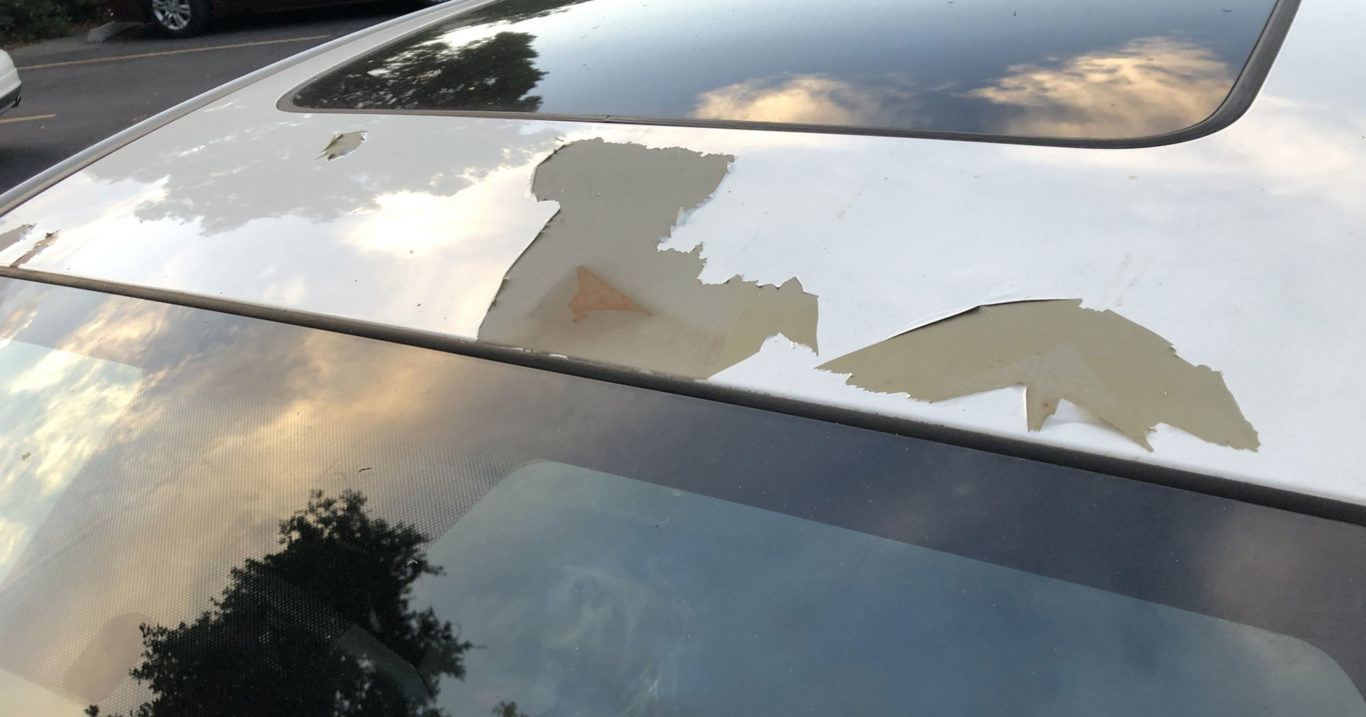
Deal With Peeling Paint Like a Pro
For most people reading this blog, peeling paint is a worst-case-scenario. Here’s what you can do about it.
For some of us, our vehicles are our pride and joy. Nothing makes us happier than spending the afternoon in the garage meticulously waxing and polishing our rides, and we feel proud to drive around in our beautiful vehicles. For others, our vehicles are merely a means to get from A to B.
Wherever you stand on your vehicle, whether it’s your passion or simply a tool, it’s important that it stays in good condition and looks good. Nothing brings a tear to our eye like peeled paint. It is ugly, but more importantly, it opens your vehicle up to rust. As an automotive paint shop that’s been open for 25 years, we’ve learned a few things about why paint peels and how to handle it. Below you’ll find our guide to dealing with peeling paint, which starts with understanding why it happens in the first place, or you can click here to go directly to our services page.
Modern 3-Layer Automotive Paint
All modern vehicles follow the same basic system for paint: a primer, the pigment, and the clear coat. Here’s what it all means
Primer
Primers perform two main functions: they seal your vehicle’s body panels (which are metal) from water, thereby protecting it from rust, and provides a surface for the pigmented layer to grab onto. Pigmented paint wouldn’t adhere to the bare metal very well on its own, but when a primer is used, the bond is extremely strong.
Pigment
The pigment layer is what gives your vehicle it’s colour. This layer doesn’t really contribute anything towards protection or performance, but is important none the less. Think of how boring cars would be without their colour!
Clear Coat
The clear coat is applied on top of the pigment. As the name would suggest, it is perfectly clear, and serves to protect the paint from mechanical damage and chemical corrosion. Neither the primer nor the pigment layer are particularly resistant to scuffs or scratches, so it’s important that your clear coat says in good condition.
Why Does Paint Peel?
Peeling, or delamination, is typically caused by one of two things: poor application or exterior damage.
Poor application could refer to the metal itself not having been adequately prepped to receive the primer or it could refer to the primer or subsequent layer being unevenly or improperly applied. In either of these scenarios, paint will lose its ability to bond with the metal and will peel off.
If exterior damage is bad enough, it may lead to delamination. A chip or scratch will allow moisture to interact with the body panel, causing rust. Once rust begins and spreads outwards, the paint will flake away. This is a major reason why we advocate against pressure washing your vehicle. Pressure washers can force water into small chips and scratches, expediting the corrosion process. When it comes to washing your vehicle, gentler is better.
Can Peeling Paint Be Repaired?
The answer to this question can be complicated and typically depends on the source and extent of damage on your vehicle. The process may be simple and just involve sanding, priming, and painting, while other circumstances may require more serious intervention. The best thing you can do is get an expert second opinion – to talk to an expert, just click here.